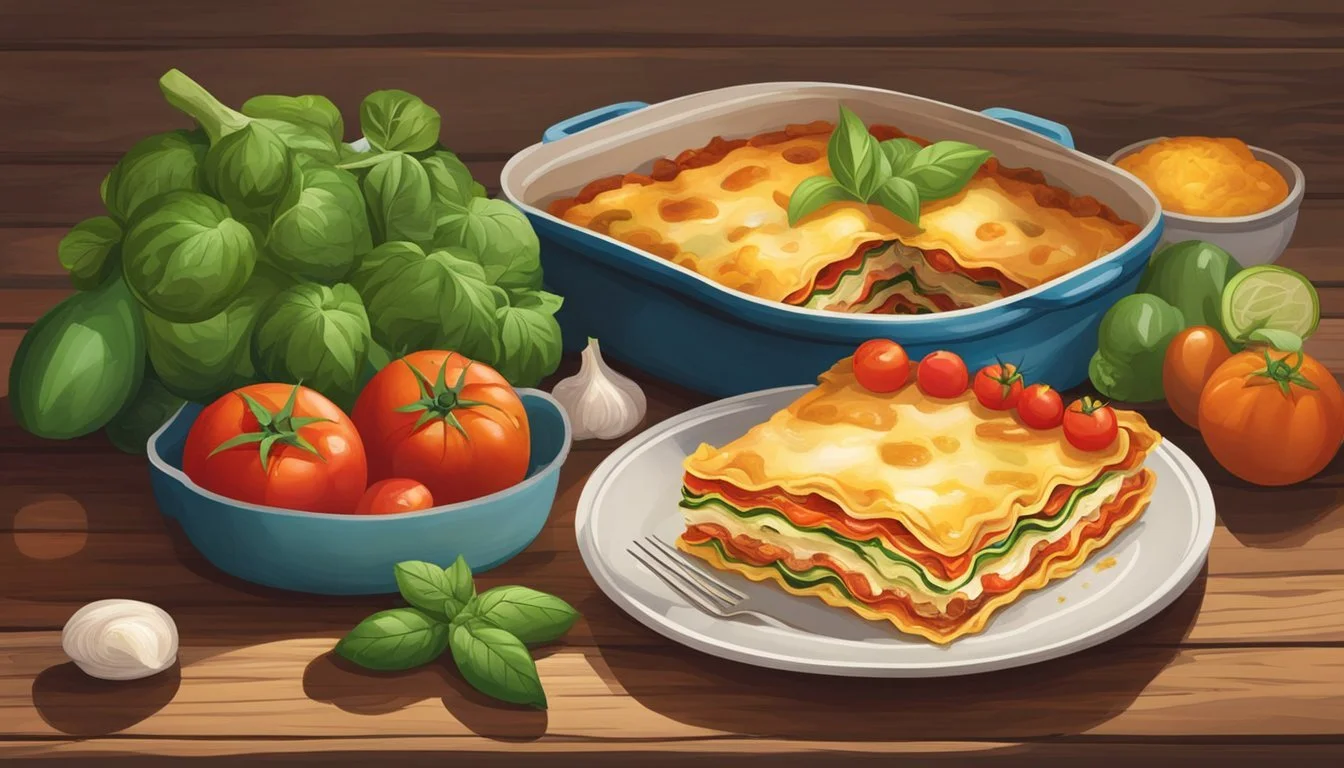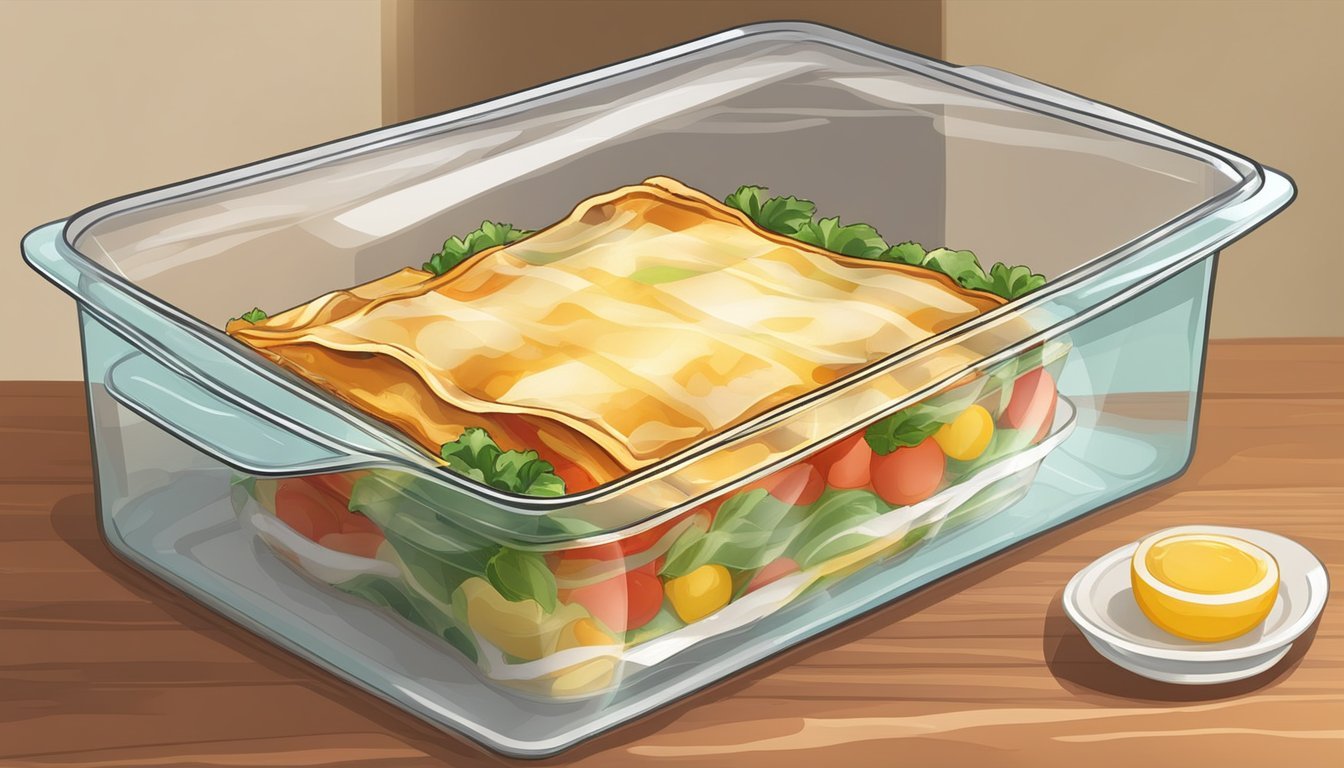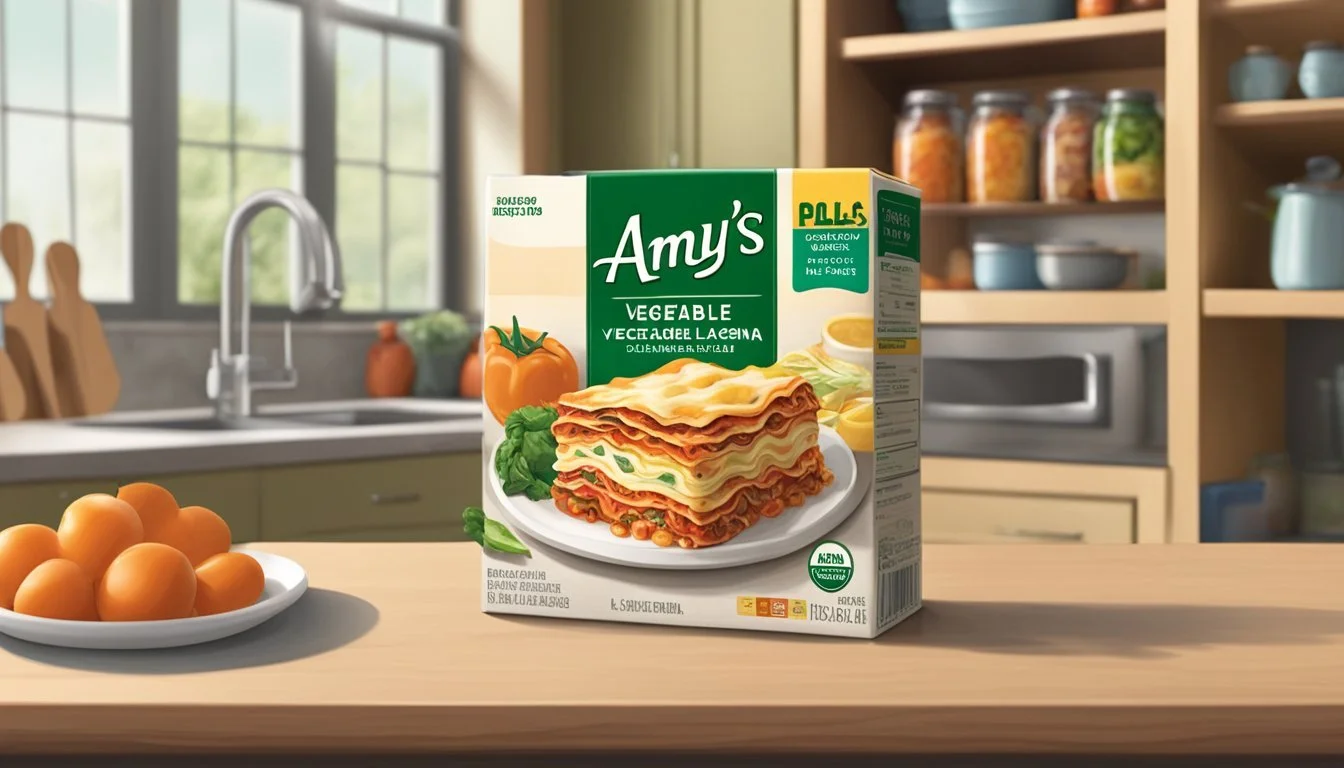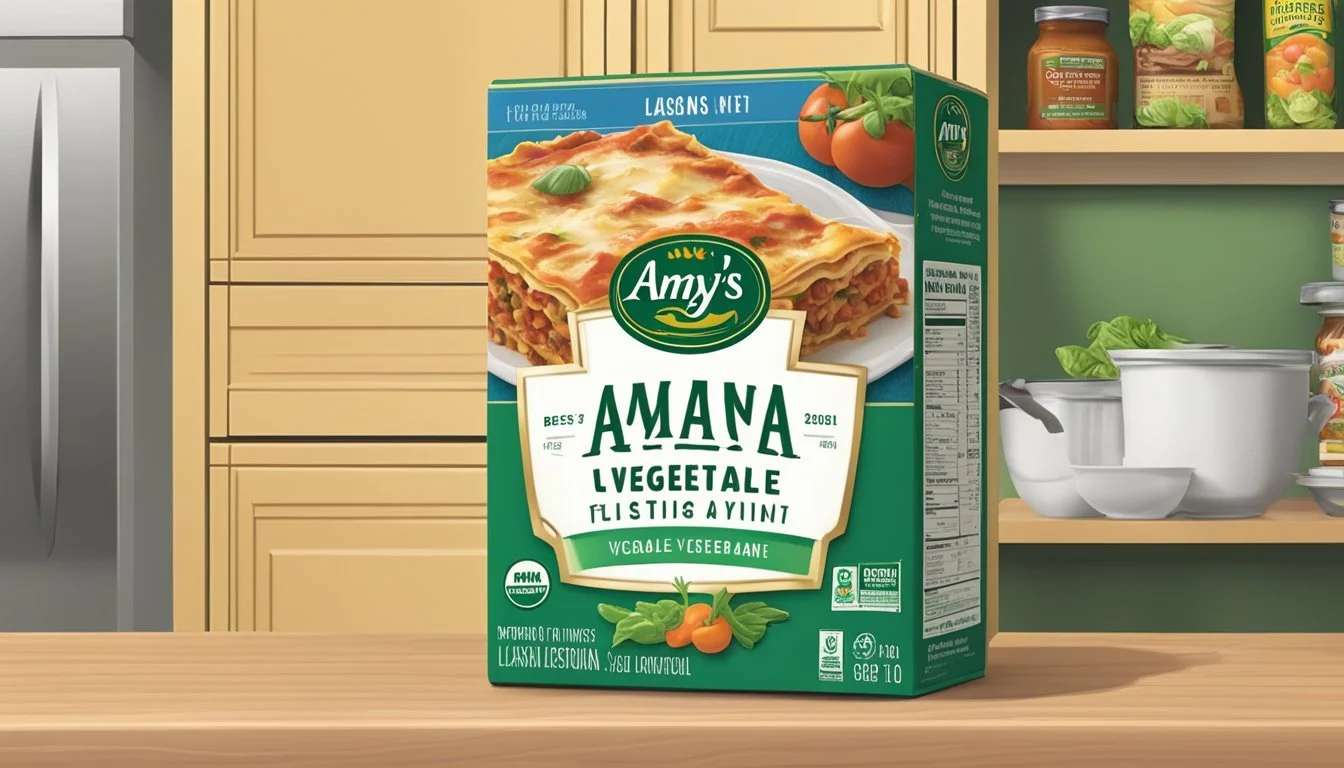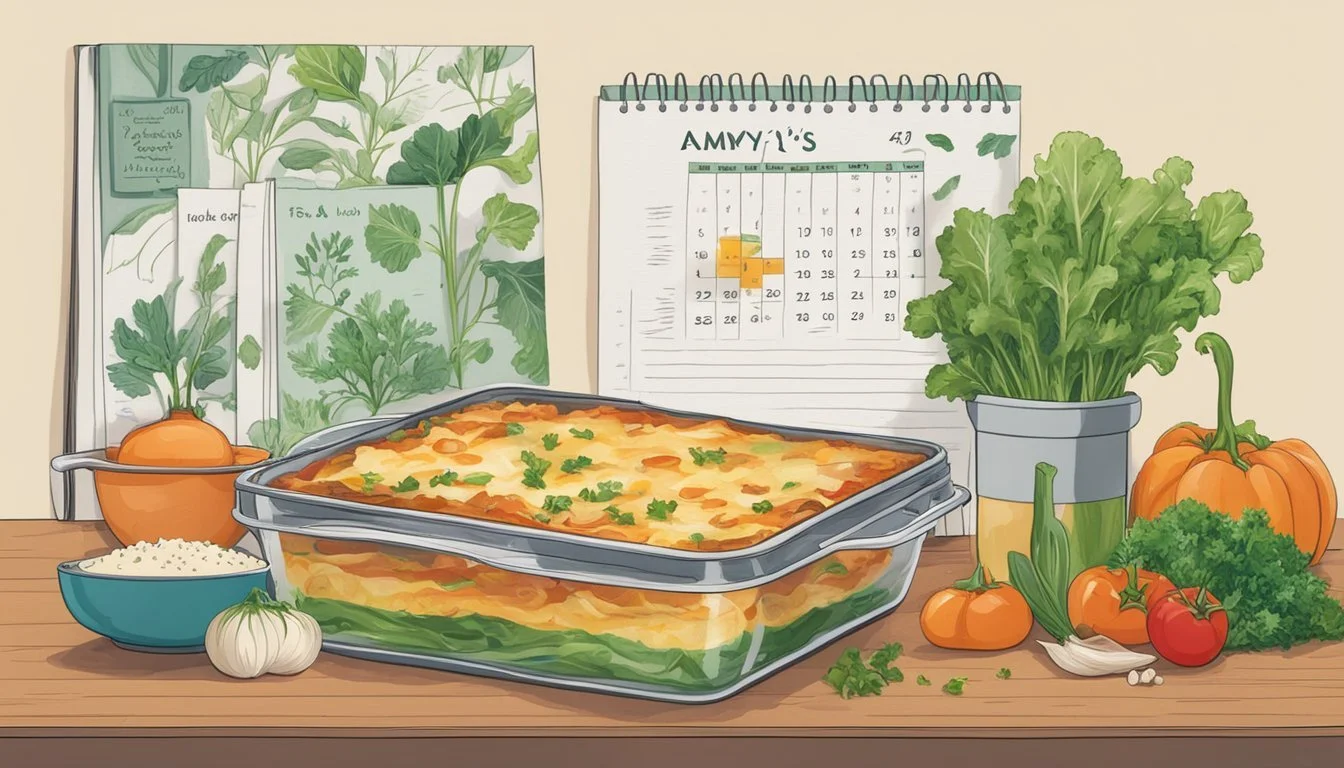How Long Does Amy's Vegetable Lasagna Last?
Tips for Maximum Freshness
Amy's Vegetable Lasagna is a popular choice for those seeking a delicious, convenient, and organic meal option. Whether you're planning a family dinner or looking for a quick meal, you might wonder just how long it can last. Understanding the shelf life and storage conditions of frozen lasagna is essential for maintaining its quality and safety.
When kept in the freezer, Amy's Vegetable Lasagna maintains its best quality for about 6 months. Once it's cooked, any leftovers should be refrigerated and consumed within 3-4 days. Always check for any signs of spoilage before consuming leftovers to ensure safety.
Proper storage extends the lifespan of this beloved dish, ensuring that you can enjoy its rich flavors whenever you need a hearty meal. Freezing as soon as possible and avoiding repeated thawing are key practices.
Understanding Vegetable Lasagna
Vegetable lasagna is a popular Italian dish that's appreciated by many for its rich flavors and nutritious ingredients.
Vegetable lasagna typically includes a variety of fresh vegetables such as carrot, zucchini, spinach, bell pepper, yellow squash, mushrooms, and onions.
These vegetables are often combined with layers of lasagna noodles and marinara sauce or tomato sauce.
For sautéing the vegetables, olive oil is commonly used. Garlic and fresh basil can be added for extra flavor.
When it comes to the cheeses, ricotta, mozzarella cheese, parmesan cheese, and sometimes cottage cheese are layered between the noodles and vegetables.
Black pepper and crushed red pepper flakes can be included to give the dish a slight kick.
Here's a list of typical ingredients:
Lasagna noodles
Carrot
Zucchini
Spinach
Bell pepper
Yellow squash
Mushrooms
Onions
Ricotta
Mozzarella cheese
Parmesan cheese
Cottage cheese
Marinara sauce or tomato sauce
Olive oil
Garlic
Fresh basil
Black pepper
Crushed red pepper flakes
Vegetable lasagna is versatile and can be adjusted to suit various dietary needs, including gluten-free and dairy-free variations. It's a delicious and wholesome meal that can be enjoyed by vegetarians and meat-eaters alike.
Proper Storage of Vegetable Lasagna
Properly storing vegetable lasagna ensures it remains fresh and safe to eat. This section outlines effective methods and best practices for both refrigeration and freezing.
Refrigeration Parameters
Vegetable lasagna, whether it's Amy's Kitchen variety or homemade, can be safely stored in the refrigerator for 3-5 days.
Keep it covered with foil or plastic wrap to maintain moisture and prevent contamination.
If the lasagna was freshly cooked, let it cool to room temperature before refrigerating to avoid raising the fridge's internal temperature.
Ensure your refrigerator is set to a temperature of 40°F (4°C) or lower.
Labeling the container with the preparation date helps keep track of its freshness.
Avoid storing the lasagna near raw meat or seafood to prevent cross-contamination.
Freezer Guidelines
To extend the shelf life of vegetable lasagna, freezing is an effective option.
Wrap the lasagna tightly in freezer wrap, place it in an airtight container, or use freezer bags to prevent freezer burn.
For best results, vegetables and pasta should be cooked al dente before freezing to maintain texture.
Label the packages with the freeze date, as lasagna can be frozen for 6-8 months.
When ready to use, thaw the lasagna in the refrigerator for 24 hours before reheating in the oven.
Proper packaging and labeling help maximize taste and quality, ensuring a delicious meal even after weeks or months in the freezer.
Shelf Life of Amy's Vegetable Lasagna
Amy's Vegetable Lasagna offers a convenient meal option for many families. Proper storage ensures it remains safe and delicious for consumption.
Refrigeration: Once cooked, leftover lasagna can be stored in the refrigerator. An airtight container helps maintain freshness. Typically, it remains good for 5-7 days in the fridge.
Freezer: For longer storage, freezing is a viable option. Uncooked or cooked lasagna can be frozen. When stored properly, it lasts for 6-8 months in the freezer.
Manufacture Date: The manufacture date is vital for determining the shelf life of Amy's Vegetable Lasagna. It is often thermally imprinted on the packaging, usually indicated on the heat-sealed flap or side of the box.
Shelf Life in Grocery: On the shelf, the lasagna has a shelf life of about one year from the manufacture date. Checking the expiration date is crucial.
Ensuring proper storage conditions for Amy's Vegetable Lasagna helps maximize its shelf life, whether you opt for refrigeration or freezing.
Heating and Serving Instructions
To ensure an optimal experience when enjoying Amy's Vegetable Lasagna, follow the precise steps tailored for both the microwave and conventional oven methods. Each approach ensures a flavorful and well-heated meal.
Microwave Procedure
For a quick and convenient option, follow these steps:
Prepare: Begin by making a 1-inch slit in the overwrap to allow steam to escape.
Heat: Place the lasagna in the microwave and cook on high for 5 minutes.
Wait: Let the lasagna sit in the microwave for 1 minute.
Rotate and Continue: Heat on medium for an additional 2 minutes if necessary after rotating the tray 1/4 turn halfway through.
This method is ideal for single servings and ensures the lasagna is heated evenly.
Conventional Oven Tips
For those who prefer a traditional approach, use these steps:
Preheat and Prepare: Preheat your oven to 375°F. Remove the overwrap from the lasagna, and place the tray on a baking sheet for stability.
Bake: Place the lasagna on the middle rack of the oven. Bake for 40-45 minutes.
Rest: After baking, let the lasagna stand for 2-3 minutes before serving to allow it to set properly.
This method is excellent for retaining the texture and flavor of the lasagna's ingredients.
Determining Lasagna Spoilage
Identifying spoiled vegetable lasagna involves assessing several factors, including appearance, smell, and taste.
First, examine the lasagna’s appearance. Spoiled food often shows visible signs such as discoloration or mold. Green, white, and black spots indicate spoilage. Any presence of mold suggests the lasagna is no longer safe to eat.
Smell is another critical indicator. Fresh vegetable lasagna should have a pleasant aroma. If it emits a sour, rancid, or otherwise off-putting odor, it is likely spoiled.
Taste can also signal spoilage. While it should be the last method to check, a sour or unusual taste indicates that the lasagna has gone bad. Avoid consuming more if it tastes off.
Proper storage helps prevent spoilage. Refrigerated lasagna should be consumed within 3-5 days. After this period, the risk of bacterial growth increases.
For frozen lasagna, ensure it remains at 0°F (-18°C) or lower. Proper wrapping with plastic wrap and aluminum foil helps preserve quality and prevent freezer burn.
Keep in mind that spoiled lasagna can pose health risks. When in doubt, discard the lasagna to avoid potential foodborne illnesses. Using all these methods collectively ensures you can confidently determine if your vegetable lasagna is safe to eat or spoiled.
Health and Nutritional Information
Amy's Vegetable Lasagna is a convenient and nutritious option for many.
A serving size of one tray (269g) contains 350 calories. Key nutritional components include:
Total Fat: 14g (22% Daily Value)
Saturated Fat: 6g (35% Daily Value)
Trans Fat: 0g
Cholesterol: 30mg (10% Daily Value)
Sodium: 670mg (29% Daily Value)
Ingredients: This lasagna features organic vegetables and pasta. Common ingredients include tomatoes, spinach, and cheese. These provide essential vitamins and minerals, such as Vitamin A, Vitamin C, calcium, and iron.
The nutrient content reflects its balance of vegetables, cheese, and pasta, suitable for those seeking a hearty meal. The lasagna is vegetarian and adheres to organic standards, using non-GMO products.
For individuals with dietary restrictions, it's important to note the presence of dairy, which could be a consideration for those who are lactose intolerant or vegan.
Amy’s Kitchen promotes using high-quality, organic ingredients, which can be beneficial for those looking to maintain a healthy lifestyle.
Dietary Considerations
Amy's Vegetable Lasagna is ideal for those following a vegetarian diet. It is made without any meat products, providing a flavorful option for vegetarians seeking a convenient meal.
For individuals with gluten sensitivities or celiac disease, Amy's offers a Gluten-Free Dairy-Free Vegetable Lasagna variant. This ensures that even those who must avoid gluten can enjoy a comforting lasagna dish without compromising dietary restrictions.
Nutritional content is a key component. A single serving of Amy's Vegetable Lasagna contains 350 calories. Here's a quick overview of the nutrition facts for the standard version per serving (269g):
Nutrient Amount Daily Value Calories 350 kcal 21% Total Fat 14 g 22% Saturated Fat 6 g 35% Trans Fat 0 g 0% Cholesterol 30 mg 10% Sodium 670 mg 29%
These lasagnas are made with organic ingredients when possible, catering to those who prefer certified organic products. They avoid genetically modified organisms (GMOs), making them a fitting choice for health-conscious consumers.
Cooking instructions vary slightly between versions. The conventional oven-baked lasagna requires:
Removing overwrap
Baking the tray at 375°F for 40-45 minutes
The gluten-free variant:
Requires baking at 425°F for 35-40 minutes, covered with foil.
Amy's products aim for both taste satisfaction and meeting dietary needs, making their vegetable lasagna a versatile option for various dietary preferences.
Additional Resource Access
Finding reliable sources to assist you with the preparation and storage of Amy's Vegetable Lasagna can significantly simplify meal planning and safety. Here are some specific online platforms and types of resources you might find helpful.
Recipe Websites
For those seeking comprehensive guidance on how to cook and store Amy's Vegetable Lasagna, several recipe websites provide detailed instructions. Popular sites like AllRecipes and Epicurious offer step-by-step directions that can cater to both novice and experienced cooks.
These sites often include review sections where users share their personal tips and modifications, which can provide practical advice. Additionally, many of these websites have support articles and user forums where you can ask questions directly within a community of like-minded individuals.
Using browser plugins can help save and organize your favorite recipes, making it easier to refer back when needed. Most recipe websites are optimized for various web browsers, ensuring smooth navigation and ease of use.
Food Blogs
Food blogs are another valuable resource for those looking to enhance their Amy's Vegetable Lasagna experience. Blogs such as Smitten Kitchen and Pinch of Yum often feature creative spins on classic recipes, including vegetarian dishes.
Bloggers frequently discuss storage tips, including how to best preserve lasagna in the refrigerator or freezer. This practical advice is usually based on personal experimentation, making the recommendations quite reliable.
Engaging in the comment sections of these blogs can provide further insight, as fellow readers and the blog authors themselves often reply, adding more layers of knowledge. Additionally, many food blogs offer email subscriptions and direct links to articles, enhancing ease of access through your web browser.
Credits & Acknowledgments
This article wouldn't have been possible without the support and contributions from various sources.
Amy's Kitchen played a pivotal role by providing detailed information about their vegetable lasagna. The company's transparency regarding ingredients and cooking directions was invaluable.
Online Retailers such as FreshDirect and Shaw's offered product descriptions and pricing, which helped enrich the content. Their adherence to product specifications ensured accurate information.
Special thanks to Amy’s Kitchen Customer Service for promptly addressing queries about product shelf life and expiration dates. Their expertise provided essential clarity.
Gratitude is also extended to the culinary community for sharing best practices in food storage and preparation. Insights from experienced chefs and home cooks added practical value to the article.
Without these contributions, providing comprehensive and accurate information about Amy’s Vegetable Lasagna would not have been achievable.


